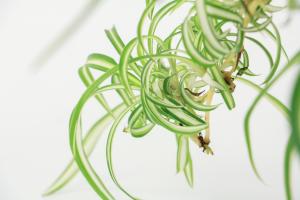Should I Get Rid of Potted Plants with Mites?
If you have noticed tiny, crawling creatures on your potted plants or webs on the leaves, there is a good chance that they are mites. While some species of mites are beneficial to plants, others can cause significant damage and spread diseases. As a result, as a plant owner, you may be wondering whether you should get rid of your potted plants with mites or try to eradicate them instead. In this article, we will explore this question and provide you with some useful tips to help you make the best decision for your plants.
The Risks of Keeping Mites on Potted Plants
Mites can be detrimental to the health and appearance of your potted plants. They can weaken or even kill young and mature plants, causing stunted growth or yellowing or browning of the leaves. Additionally, mites can weaken plant tissues, making them more susceptible to infections and diseases caused by fungi and bacteria. Furthermore, mites can move from plant to plant, spreading viruses and diseases that can ruin entire collections of plants.
How to Identify Mites on Your Potted Plants
If you suspect that your plants may have mites, it is essential to know how to identify them. Mites can be difficult to spot with the naked eye, so you might need to use a magnifying glass. Most mites are less than 1 mm long and can vary in color from white, yellow, or red to brown or black. They usually feed on the undersides of leaves, where they lay their eggs and create webs. If you see fine webbing on your plants or notice that their leaves are turning yellow or brown, chances are that you have a mite infestation.
How to Get Rid of Mites on Potted Plants
The good news is that there are several ways to control and eliminate mites on your potted plants. Here are some tried-and-tested methods that can help:
Isolate the affected plants: If you have several potted plants, it is essential to isolate the affected ones to prevent the mites from spreading to the healthy plants.
Remove and discard infested leaves: The easiest way to get rid of mites is to prune off the infested leaves and throw them away in a sealed plastic bag. Do not compost them, as the mites might spread to your soil and other plants.
Use insecticidal soap: Insecticidal soap is a natural and effective way to kill mites on plants. Simply spray the soap directly onto the affected plants, making sure to cover the undersides of the leaves.
Apply neem oil: Neem oil is another organic option that can help reduce mite populations. Mix the oil with water and spray the plants, focusing on the undersides of the leaves.
Introduce beneficial insects: Certain bugs, such as ladybugs and predatory mites, can help control mite populations by feeding on them. Introducing them to your potted plants can be an effective and eco-friendly way to get rid of the mites.
When to Consider Getting Rid of Your Potted Plants
If you have severe mite infestations that do not respond to treatment or have spread to the majority of your plants, you may want to consider getting rid of them altogether. It is best to dispose of the plants by placing them in sealed bags and throwing them away in the trash, rather than composting them, where they can infect other plants.
Conclusion
In conclusion, mite infestations can pose a danger to your potted plants, their health, and the health of other plants in your collection. However, you do not have to give up on your plants if you notice mites. With the proper identification and treatment, you can control and eliminate mites and save your plants. If you decide to get rid of your plants, be sure to dispose of them appropriately to prevent the spread of mites to other plants in your garden or community.

 how many times do yo...
how many times do yo... how many planted tre...
how many planted tre... how many pine trees ...
how many pine trees ... how many pecan trees...
how many pecan trees... how many plants comp...
how many plants comp... how many plants can ...
how many plants can ... how many plants and ...
how many plants and ... how many pepper plan...
how many pepper plan...































